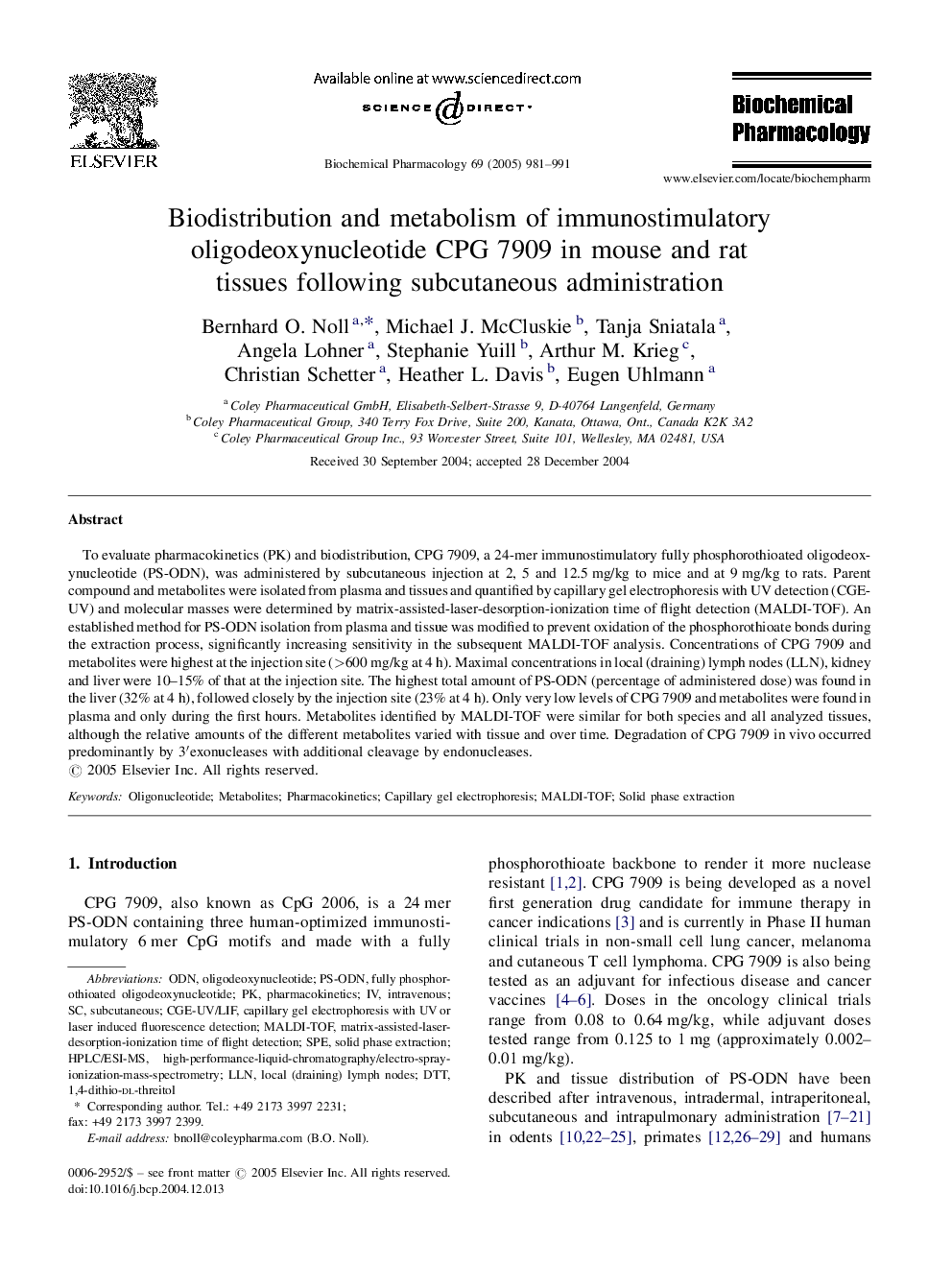| Article ID | Journal | Published Year | Pages | File Type |
|---|---|---|---|---|
| 9002297 | Biochemical Pharmacology | 2005 | 11 Pages |
Abstract
To evaluate pharmacokinetics (PK) and biodistribution, CPG 7909, a 24-mer immunostimulatory fully phosphorothioated oligodeoxynucleotide (PS-ODN), was administered by subcutaneous injection at 2, 5 and 12.5Â mg/kg to mice and at 9Â mg/kg to rats. Parent compound and metabolites were isolated from plasma and tissues and quantified by capillary gel electrophoresis with UV detection (CGE-UV) and molecular masses were determined by matrix-assisted-laser-desorption-ionization time of flight detection (MALDI-TOF). An established method for PS-ODN isolation from plasma and tissue was modified to prevent oxidation of the phosphorothioate bonds during the extraction process, significantly increasing sensitivity in the subsequent MALDI-TOF analysis. Concentrations of CPG 7909 and metabolites were highest at the injection site (>600Â mg/kg at 4Â h). Maximal concentrations in local (draining) lymph nodes (LLN), kidney and liver were 10-15% of that at the injection site. The highest total amount of PS-ODN (percentage of administered dose) was found in the liver (32% at 4Â h), followed closely by the injection site (23% at 4Â h). Only very low levels of CPG 7909 and metabolites were found in plasma and only during the first hours. Metabolites identified by MALDI-TOF were similar for both species and all analyzed tissues, although the relative amounts of the different metabolites varied with tissue and over time. Degradation of CPG 7909 in vivo occurred predominantly by 3â²exonucleases with additional cleavage by endonucleases.
Keywords
Related Topics
Health Sciences
Pharmacology, Toxicology and Pharmaceutical Science
Pharmacology
Authors
Bernhard O. Noll, Michael J. McCluskie, Tanja Sniatala, Angela Lohner, Stephanie Yuill, Arthur M. Krieg, Christian Schetter, Heather L. Davis, Eugen Uhlmann,
